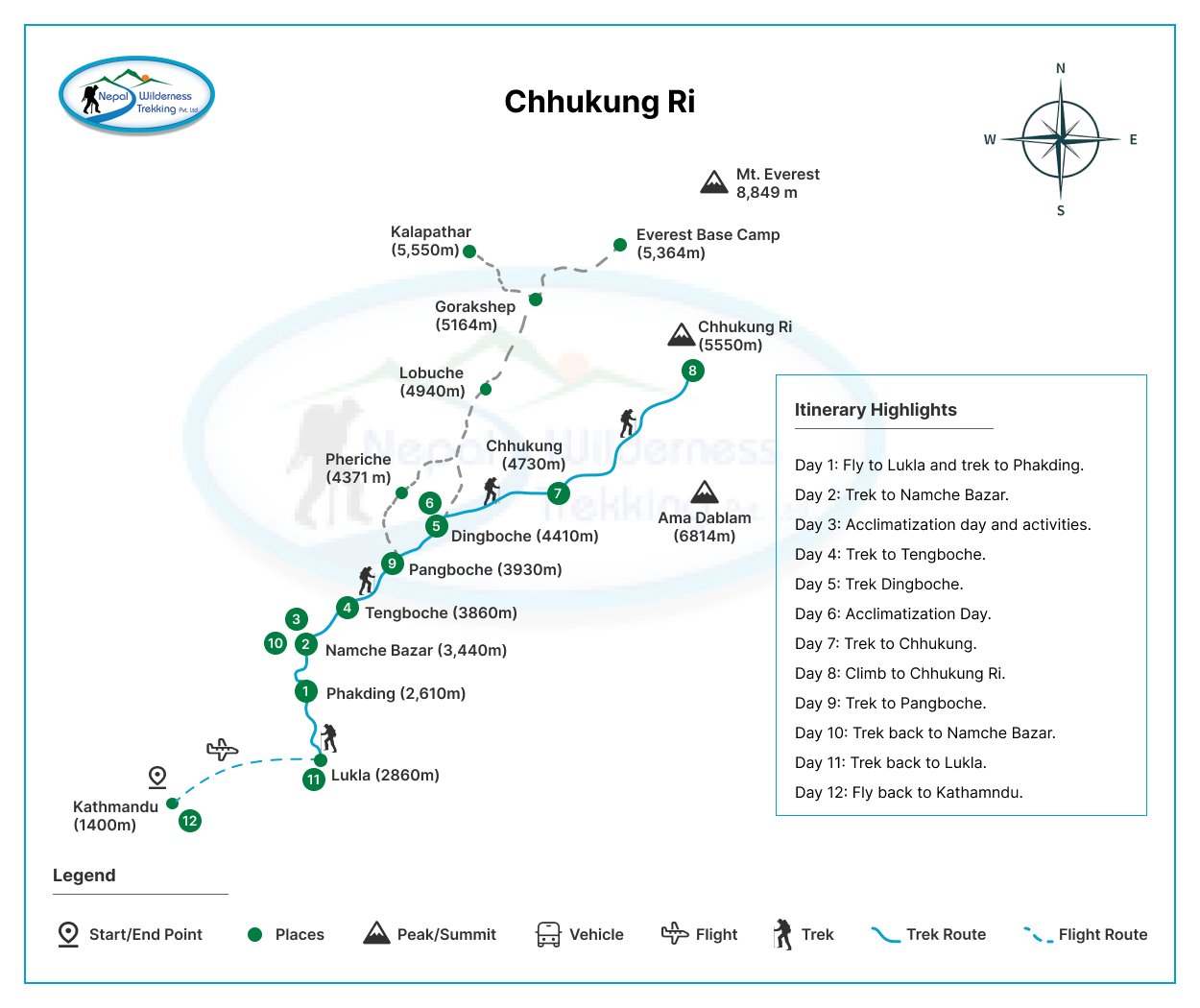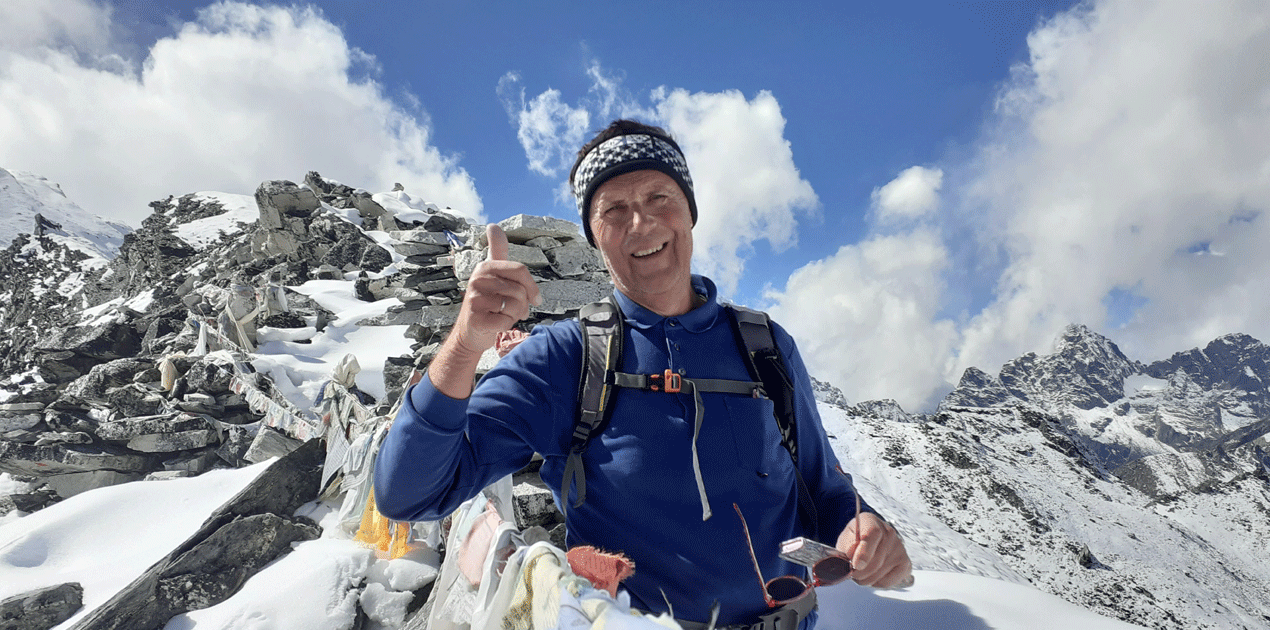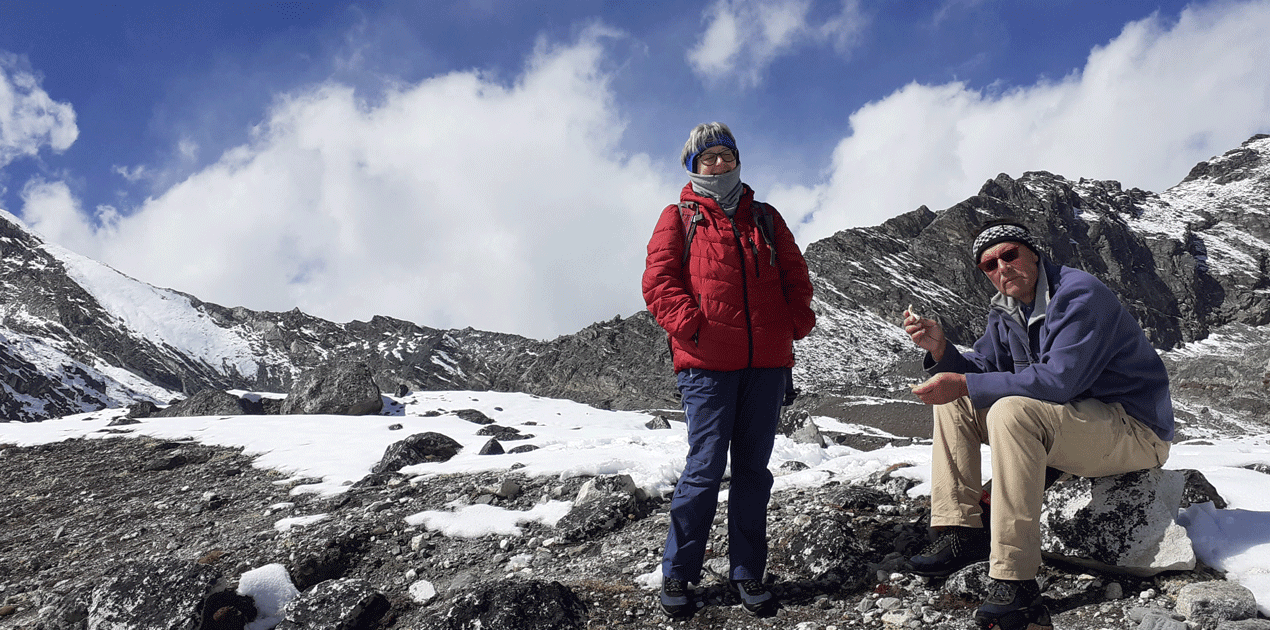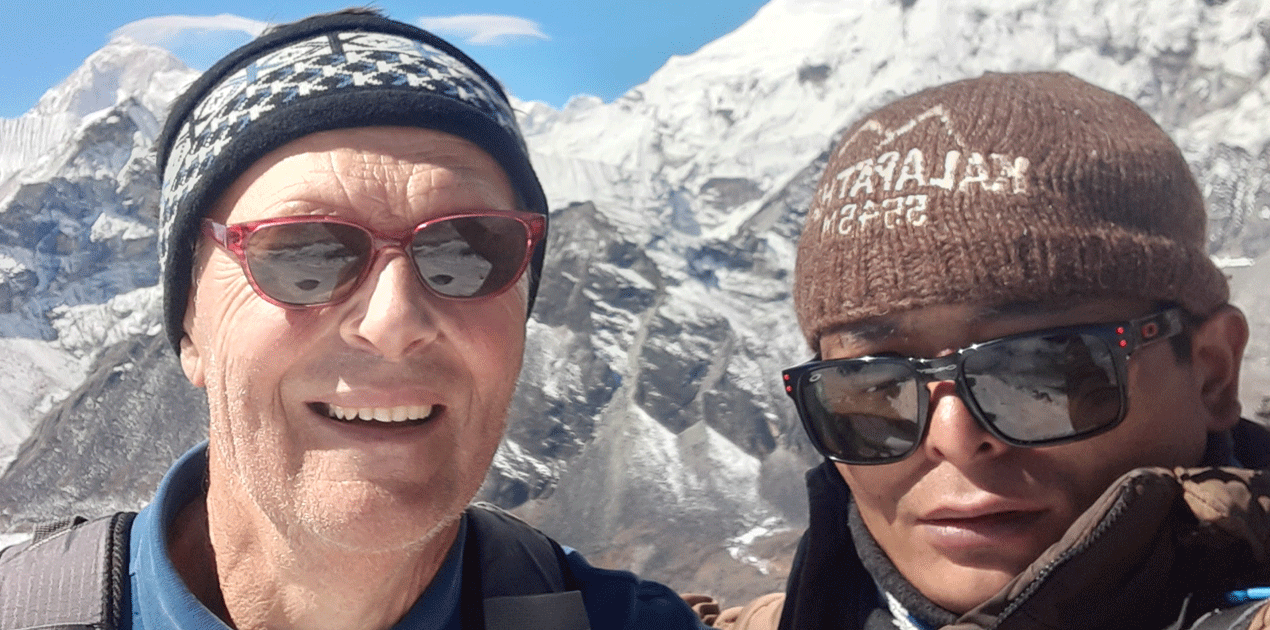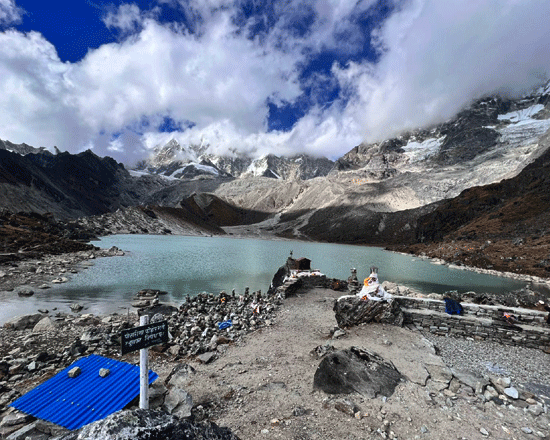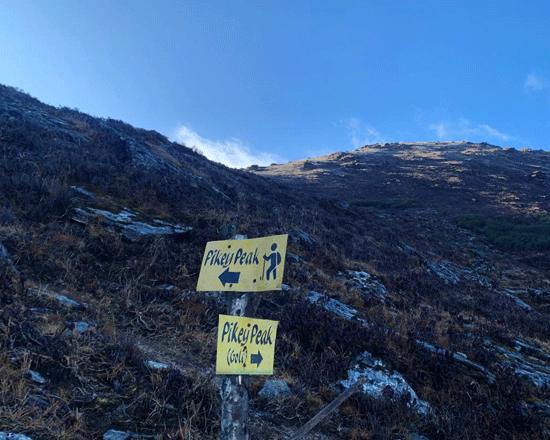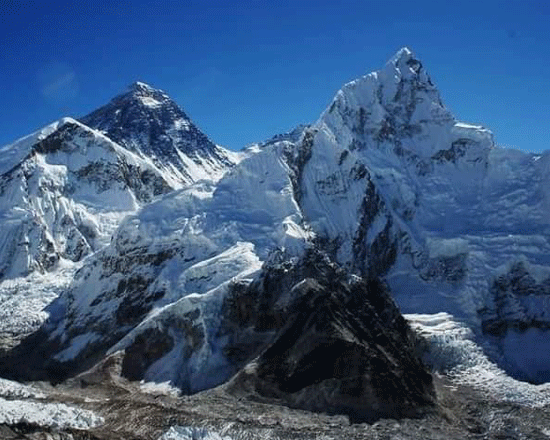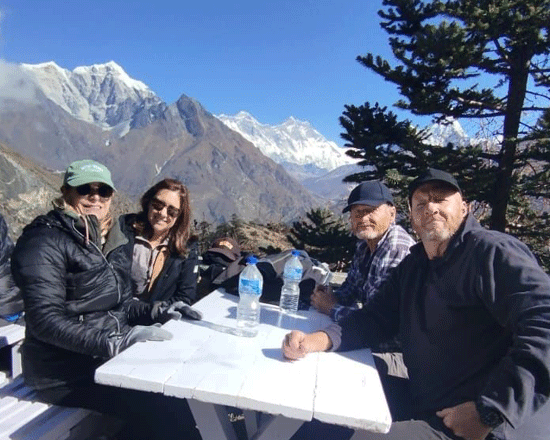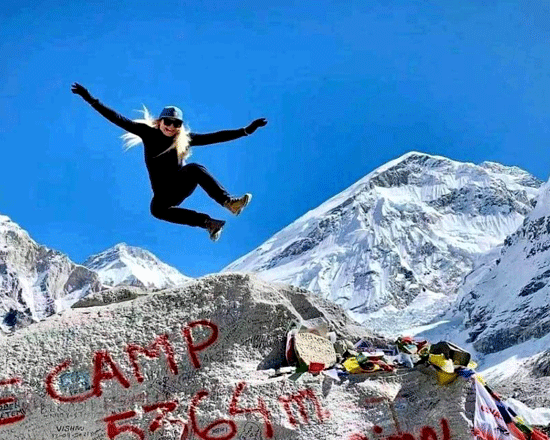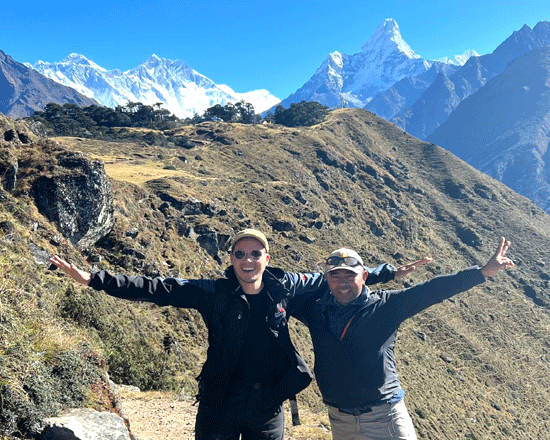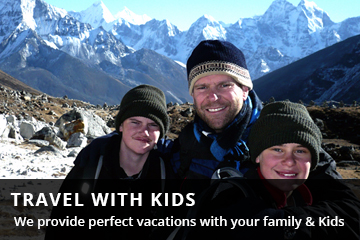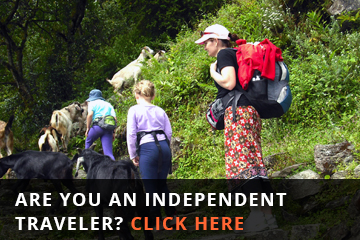Chhukung Ri
Chhukung Ri
Everest RegionTrip Facts
Since the terrain can be hard and the days long, hikers on these treks should be in good physical condition and have some previous mountain walking experience. Steep climbing may be involved, although it is never necessary to use ropes. Treks at this level can he arranged for periods of 16 to 21 days. Typically, a gradual ascent through a green river valley will lead you up to a number of high passes, where you will reach the altitude of 5416m. Often times, you will get a close insight into the Tibetan culture. Participants should expect to trek above 5416m/17872ft.
100%
Overview
Chhukung Ri Trek: A Journey to Himalayan Serenity
Chhukung Ri Trek is a prominent peak located in the Khumbu region of Nepal, near the village of Chhukung. It’s renowned for offering stunning views of the surrounding Himalayan peaks, including Lhotse, Makalu, Ama Dablam, and the iconic Mount Everest. Standing at an altitude of 5,546 meters (18,192 feet). Chhukung Ri Trek is a non-technical peak that attracts adventurers seeking a thrilling yet accessible Himalayan experience.
In recent years, Chhukung Ri Trek has gained popularity not only for its panoramic views but also as a challenging yet accessible trekking peak for those looking to experience high-altitude trekking without technical climbing. The ascent to Chhukung Ri offers breathtaking vistas of the Himalayan range, making it a memorable experience for trekkers and climbers alike.
Discovering Chhukung Ri Trek
Highlights of Chhukung Ri Trek
The journey to Chhukung Peak typically begins with a scenic flight from Kathmandu to Lukla (2,860 meters/9,383 feet), where the trek commences. From Lukla, trekkers embark on a picturesque trail that winds through lush rhododendron forests, attractive Sherpa villages, and across exhilarating suspension bridges spanning the Dudh Kosi river.
Cultural Immersion
Trekkers pass through vibrant Sherpa settlements like Namche Bazaar (3,440 meters/11,286 feet), Tengboche (3,867 meters/12,687 feet), and Dingboche (4,410 meters/14,468 feet). These all offers glimpses into the rich cultural heritage of the region. Namche Bazaar, a bustling trading hub, provides an opportunity to interact with local Sherpa communities renowned for their hospitality and mountaineering skill.
Chhukung Base Camp
Located at the base of Chhukung Ri, the trek’s focal point is Chhukung Ri Base Camp, where preparations for the ascent begin. Experienced guides from Nepal Wilderness Trekking manage the base camp, ensuring they equip trekkers with the necessary knowledge and safety measures for the climb ahead. Island Peak also sits near Chhukung.
Climbing Chhukung Ri
Ascending Chhukung Ri requires approximately 3-4 hours of moderate to strenuous effort, making it an ideal acclimatization hike for mountaineers preparing for more challenging peaks like Imja Tse. The climb is notable for its rocky terrain and panoramic views, offering trekkers a sense of accomplishment as they reach the summit.
During these periods, the weather is generally stable, with clear skies and comfortable temperatures. Which is helpful for trekking and enjoying the scenic beauty of the Himalayas.
Environmental Considerations
- Water: Safe drinking water is crucial. Trekkers should purify water or buy bottled water from lodges.
- Waste Management: Trekkers are encouraged to follow eco-friendly practices, such as carrying out their trash and using designated waste disposal areas to minimize environmental impact.
Trash Removal Efforts
- Clean-up Campaigns: Various organizations, both local and international, conduct regular clean-up campaigns. The Sagarmatha Pollution Control Committee (SPCC) organizes annual clean-up drives, collecting tons of waste from the region.
- Everest Summiteers Association: This group, along with other NGOs, has undertaken significant efforts to clean up the higher camps and Everest Base Camp.
Waste Management Facilities
- Sagarmatha Pollution Control Committee (SPCC): The SPCC manages waste by setting up collection points along the trekking routes and at Base Camp. They also educate locals and trekkers about proper waste disposal.
- Recycling Centers: In villages like Namche Bazaar and Lukla, there are facilities to sort and recycle waste. Organic waste is composted, while non-biodegradable waste is transported to lower altitudes for disposal.
Experience with Nepal Wilderness Trekking
Nepal Wilderness Trekking ensures safety and enriching experiences with expert guides. For more trekking adventures in Nepal, consider exploring options like the Three Passes Trek, Ganesh Himal Base Camp Trek, Gokyo Ri Trek, and Langtang Valley Trek.
Conclusion
The Chhukung Ri trek is more than just a climb; it’s an immersion into the heart of the Himalayas, where every step offers a new perspective of this awe-inspiring landscape. Whether you’re a seasoned trekker or embarking on your first Himalayan adventure, Chhukung Ri promises unforgettable moments and a deeper appreciation for Nepal’s natural wonders.
Embark on the Chhukung Ri trek and discover the serenity of the Himalayas, where adventure meets tranquility and every summit offers a glimpse of Everest’s majestic realm.
Note
All published dates are guaranteed to depart. If these dates don’t match your travel plans, we are happy to create a trip for your desired dates. Let us know what kind of trip you are looking for, and we will help make your dream destination a reality.
Detail Itinerary
- Day 01: Flying from Kathmandu to Lukla. Trek to Phakding (2650m/8,694ft) 4 hrs. Overnight at the lodge
- Day 02: From Phakding to Namche Bazaar, 3440m, 6 hours. Overnight at the lodge
- Day 03: You will hike to the famous Everest View Hotel (3800m/12487ft) for 3 hours and catch a glimpse of Everest. After that, you can visit the Hilary and Sherpa museum in Namche. There is a slide show program in the evening as well. Overnight at the lodge
- Day 04: Namche Bazaar to Tengboche (3850 m/12,631 ft) 5-6 hours. Visit the Buddhist monasteries. Overnight at the lodge
- Day 05: Trek from Tengboche to Dingboche (4350m/14271ft) in 4 hours. See Mt. Ama Dablam and Mt. Lhotse on the way. Overnight at the lodge
- Day 06: Dingboche (4350m/14,271ft) acclimatization
- Day 07: Three-hour trek from Dingboche to Chhukung (4730m/15,518ft). Overnight at the lodge
- Day 08: Climb to Chhukung-Ri (5550m/18,208ft) in 10 hours.Lodge night at the lodge
- Day 09: Trek from Chhukung to Pangboche (3985m/13,074ft) 6hrs. Overnight at the lodge
- Day 10: From Pangboche to Namche Bazaar (3440m/11,286ft) in 05 hours. Overnight at the lodge
- Day 11: The trek from Namche Bazaar to Lukla (2840m/9,317ft) takes seven hours. Overnight at the lodge
- Day 12: Fly from Lukla to Kathmandu in 35 minutes Overnight in your own hotels
Cost Included
- Domestic flights from Kathmandu to Lukla and Lukla to Kathmandu
- Three meals a day (breakfast, lunch, and dinner) are served with Italian, Chinese, Nepali, Indian, and other European foods.
- Accommodation at tea houses according to the itinerary
- Organize your belongings with this kitbag
- Sleeping bag for a comfortable night on a trek in minus-25 degrees
- Trekking Permit for Everest National Park
- Permit for entry into Khumbu Pasang Lhamu Rural Municipality
- Experienced English-speaking, government-licensed trekking guide
- One porter for every two passengers experienced Sherpa helpers
- Meals, accommodation, salary, and insurance for guides and porters
- Governmental paperwork, local taxes, and all necessary paper works
Cost Excluded
- International flight tickets
- Arriving at Tribhuwan International Airport, Nepal entry visa fees vary by duration (15 days - $25-30, 30 days - $60).
- Accommodations and meals in Kathmandu before and after our trip
- Personal protective equipment for high and low temperatures
- Travel insurance covers high-altitude rescue and evacuation in an emergency
- Soft drinks, caffeinated drinks, such as coke and beer,
- Water/mineral water, Dessert, etc. Laundry, hot shower
- Gratuity for the guide and porter
- All costs and expenses not listed under "cost include" are excluded.
- Costs or delays outside the control of the management, such as landslides, weather, itinerary changes due to safety concerns, illness, changes in government policies, strikes, etc.
Trip Map
